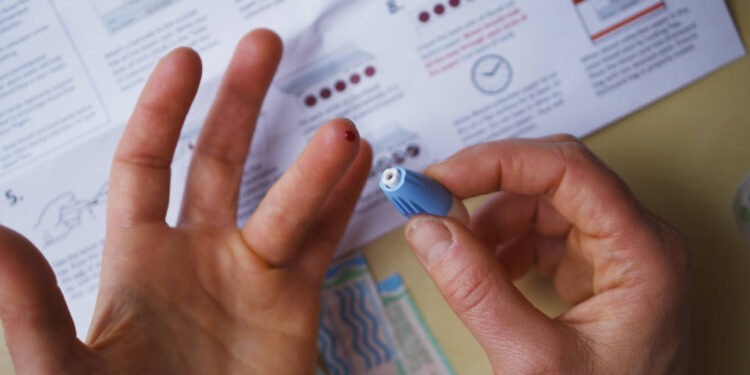The term “STD” stands for sexually transmitted diseases, which are infections spread through sexual contact. STDs are brought on by parasites, viruses, or bacteria. STDs can spread from person to person by bodily fluids such as blood, semen, or vagina. If an individual is sexually active, particularly with multiple partners, they may have concerns regarding the risk of contracting STD and the appropriate time to undergo testing.
Table of Contents
STD Testing and its Need
STD testing is crucial. An individual may be infected with STD without being aware of it. There are often no symptoms. In addition to in-clinic tests, at-home STD tests have grown much in popularity. The reason for this being is the factor of privacy and convenience attached to home testing.
Traditional testing often requires scheduling appointments, visiting a clinic, and waiting for results, which can be inconvenient and uncomfortable whereas STD testing at home offers a more practical and essential substitute. With each passing year cases of STDs are rising substantially. Surveys show large surges in cases of gonorrhoea, chlamydia, primary and secondary syphilis, and congenital syphilis. At-home STD test kits for STDs have become more and more popular due to the rise in infections and the necessity for screening.
How to test for STDs at home?
Home STD testing kits are available for purchase at pharmacies or online. Following is a series of procedure you can follow:
- The equipment and instructions for gathering samples—which could include urine, finger-prick blood, or swabs from the mouth, genitalia, or anus—are included in at-home STD test kits.
- The precise sample type and collection procedure will be specified in your test kit.
- The samples will be collected, packaged in a pre-paid envelope that comes with the kit, and sent to a lab for analysis.
- Once the lab analyzes the samples, you’ll typically receive your results online or through another method specified by the kit provider.
Convenience and Privacy of Using at-home STD Test Methods
Protecting a person’s privacy is one of the biggest advantages of at-home STD testing. Given how sensitive and intimate STD testing is, it makes sense that many people are reluctant to tell others about it. Adding convenience to the privacy factor makes at-home testing more approachable in following ways:
- No clinic visits needed: With at-home STD tests, there’s no need to make an appointment, go to a clinic, and stand in potentially busy waiting areas.
- Private: At-home STD testing can provide a more discrete means of addressing the stigma or shame around STDs, which may cause some people to avoid testing.
- Cost Effective: Compared to clinic visits, some at-home STDs tests can be less expensive, and some health plans may pay for them.
- Accurate: At-home STD testing is highly accurate and produces findings that are equivalent to regular laboratory tests. The tests use advanced technology and methodology to detect STDs, and the results are usually ready within a few days.
- Ease of using: In addition to having clear instructions and frequently pre-paid labels for mailing samples to a lab, at-home STD test kits are made to be simple to use.
- Quick: Compared to conventional testing at a clinic, the entire procedure of STD testing—from ordering the kit to getting the results—is usually quicker.
- At comfort of home: The results are usually accessible online or via a secure gateway, guaranteeing that only the patient and their healthcare provider have knowledge of them. Test results are usually available through a secure online platform, keeping personal health information confidential.
Are home testing costly? Are they insured?
While some companies have a wide variety of prices, health authorities frequently give away their test kits for free. Tests might range in price from extremely cost-effective to costly. A thorough testing kit is also offered by many businesses. Home STD testing is typically not reimbursed by insurance, though there might be an exemption for tests ordered by a telehealth provider and performed at a nearby lab.
If the results are positive, what should be done?
Staying calm is the first and foremost task. There may be a higher chance of false positive findings from home tests. Retesting might be the next step. While certain STDs can be cured, others can have their symptoms controlled with treatment. A positive diagnosis gives you the chance to treat the STD and either completely eradicate it or lessen its symptoms and lower the risk of spreading it. Whether you acquired the test kit online or at a health department, the majority of them include access to a healthcare provider. The provider will either help you in locating an in person clinic or provide you with an online consultation.
Conclusion
People can judge the pros and cons of home testing and decide how best to keep a check on their sexual health and determine when it would be best to get in-person care.
Testing at homes, however, at one’s own comfort space, still increases the chances of more and more people getting tested without worrying about letting anyone know, at least at the initial stages. Screening rates for STDs can be increased using home-based approaches. By de-stigmatising STD testing, we can foster a culture of acceptance and support, enabling people to prioritise their sexual health without fear of judgment or prejudice.


 Home
Home










